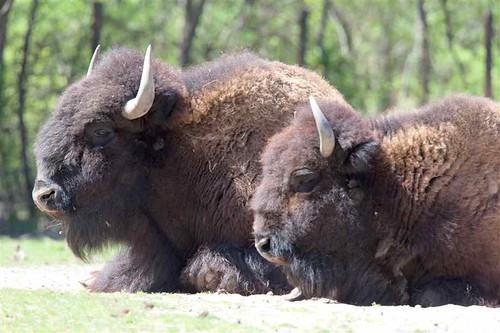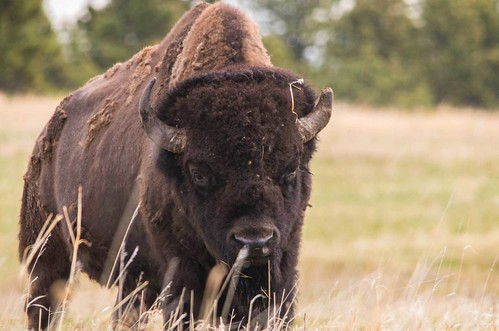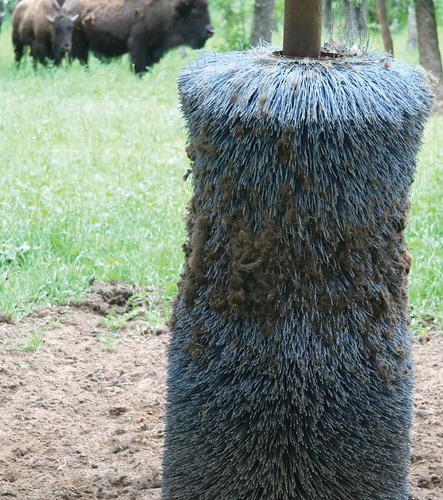
Happy Friday everybody! Its been another exciting busy week here with lots of new carding, blending and dyeing.
The new quarter of art journey clubs are starting again this month so that means heaps of extra prep work and getting everything from pigments to fibres and yarns, organised and ready. I will post a teaser label of the April clubs over the weekend so all of you can see what art journey adventures we will be getting into this month.

American Bison mean a lot to me. Bison hold such stories and history that for me, as one with Native American roots, means something very special. Enormous herds of bison once occupied the American Great Plains, and were critically important to Native American Plains tribes as sources of meat, hides, horn, bone and sinew. American Bison were hunted close to extinction by white settlers and the American military during the western migration, but they were given protected status and the population rebounded in the second half of the 20th century.
There are now substantial populations living in the United States and Canada; all the wild-ranging herds are found in state, provincial and national parks. In addition, there are several herds owned by private farmers and even some in Australia !
As a spinner and weaver I love to play and experiment with all sorts of fibres and the Bison being so close to my heart and heritage, I could not resist to try and design a blend that would not only do it justice but also excel in its beauty, handle and all over amazing way to spin and use in our fibre art.
Bunny Bison Bliss tops have the following ingredients: Superfine 17micron merino, angora bunny , Bison, Baby Camel, cashmere and tencel. It spins like a dream!
“Buffalo,” the name most Americans grew up using for bison, does not immediately evoke the image of soft, useful fiber. Yet the bison’s downy undercoat that grows each fall and sheds each spring is the finest truly luxury fibre available. The down fiber produced by an adult bison has a fairly short staple length, and measures 17 to 22 microns. An adult cow (female) bison will have roughly 1 to 3 pounds of down on her body when the fibre has fully matured, which is usually around the first of each year. The soft down grows close to the skin and is what will keep this 500kilo animal insulated and warm through the winter months. Bison populations are now estimated to be between 450,000 and 500,000, mostly in the United States and Canada. This is almost double the estimated population of 250,000 when our family started raising bison in the 1990s. Annually, around 55,000 are processed for meat. It is from these production animals that we are able to harvest fiber during January, February, and March, when the fibre is at its longest and least matted. Before that time of the year, the fiber is still growing and too short. After that, it is shedding and being rubbed into matts and balls that just cannot be untangled. After harvest, the fibre has to be thoroughly scoured even though it contains no lanolin or grease. Bison don’t have sweat glands, so to keep cool bison wallow, rolling in wet dirt to pack a layer of soil next to their skin. As such, their short, crimpy fiber retains a lot of the prairie landscape, which needs to be thoroughly removed without felting the down fibers. Scouring bison requires a lot of clean water and repeated long soaks.
Next, the fibres need to be separated, sorting the fine down from coarse hair. A bison fiber study done by North Dakota State University identified four, or possibly five, different fiber types on a mature bison. A dehairing machine can be used to separate the coarse fibres (primary coat) and guard hairs from the desired fine fibers (secondary coat). The dehairer works primarily by using centrifugal force, transferring the fine fibers between cylinders operating at different speeds, while the heavier, coarse fibers are preferentially ejected. The down is predominantly dark brown, but there are often light or white down fibers as well. There are no measurable differences between fibers of different colors, and when spun, it is all but impossible to see the white down. Unspun, it is relatively visible, but when the fibres are carded or combed and then spun, the down has a very consistent chocolate colour.
Bison love to rub themselves and so these big hairy poles were designed that catch their rogue down fibres every time give it a rub.












